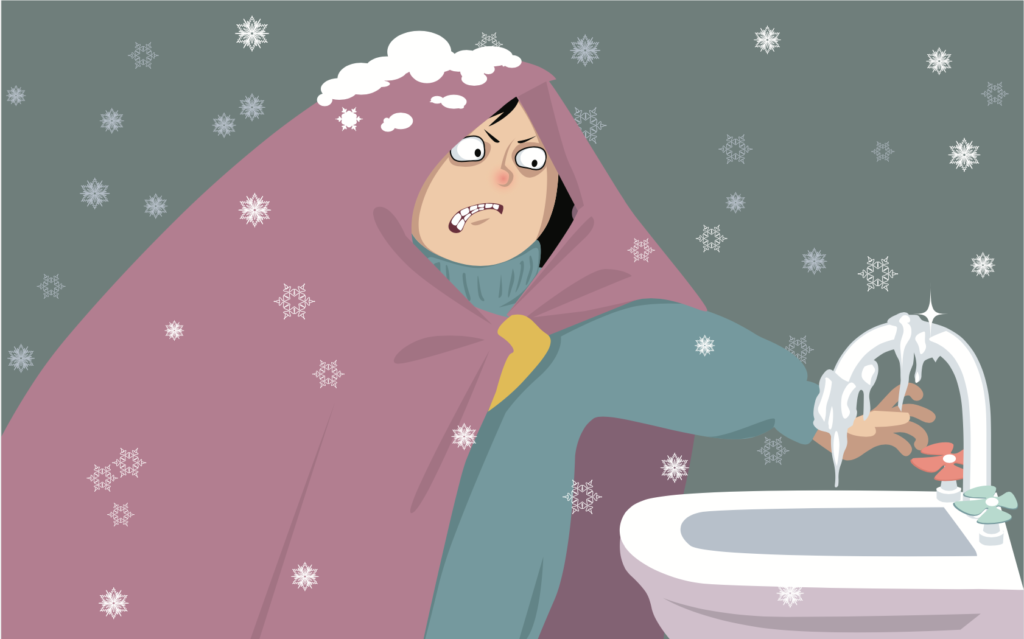Keep your home safe from water damage all winter with these tips from the experts!
The colder it gets outside, the higher the risk of pipes in your home freezing and bursting–possibly causing thousands in property damage.
The highest risk is to the pipes in unheated areas of your home, such as the garage, the attic, or the basement. But that doesn’t mean those are the only areas at risk–even interior pipes in walls or cabinets could freeze.
However, there are some simple steps that you can take to minimize the risk of frozen pipes in your home:
- Keep the set temperature on the thermostat consistent. It can be tempting to save a little on utility bills by setting the temperature a little lower while you’re sleeping, but it’s not a good idea when the temperature outside is below freezing.
- Let the cold water drip from faucets with exposed water/drain lines. Keeping water moving through those pipes, even when it’s just a tiny bit, helps prevent freezing.
- Keep garage doors closed, especially if there are exposed pipes in the garage!
- Open cabinet doors in the kitchen and the bathroom to allow the warm air to circulate, especially if the sink is on an exterior wall.
- Leave the furnace on, even if you plan to be away for a while. Keep the temperature set to 55 degrees or higher to avoid freezing.
- Add insulation to the attic, basement, or crawlspace to maintain a higher temperature in those areas.
- Open interior doors in the house to allow warm air to circulate throughout the house more evenly.
- Seal any cracks or openings in doors, windows, or where the house rests on the foundation.
Some signs of frozen pipes can include a lack of running water, frost on the pipes, and strange smells coming from your drains. Attempting to thaw frozen pipes when they have burst could lead to flooding, so the best course of action when this happens is to shut the water off at the main shutoff valve in your home and call an experienced, licensed plumber for help.
If the frozen pipes have not burst, there are some steps you can take to attempt to thaw the frozen pipes yourself:
- Turn the faucet on to thaw any ice plugs in the drain.
- Apply heat to the frozen pipe using a space heater, a hair dryer, or a heating pad.
- Check the other pipes in your home–if one line has frozen, chances are good that others have as well.
When in doubt, the Plumbing Experts at Full Nelson Plumbing, Heating, and Cooling are always here to help! You can give us a call anytime, day or night, for 24 hour emergency service.




